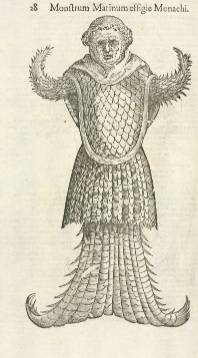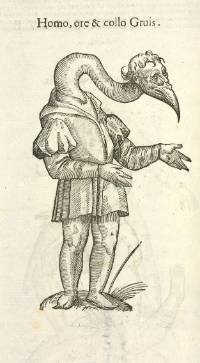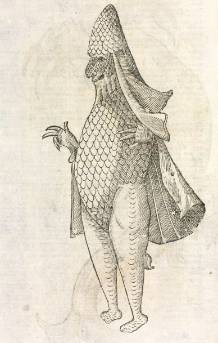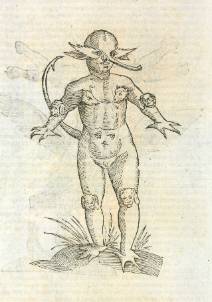Monsters in the Library
by Lisa Di Tommaso (Special Collections Librarian)
Ulisse Aldrovandi (1522-1605) was a true Renaissance man who studied law, philosophy, logic and mathematics at the universities of Bologna and Padua. He was one of the great innovators of the study of nature during this period.
Aldrovandi established one of the most acclaimed curiosity cabinets in European history, containing more than 18,000 specimens, according to his written description from 1595. He was a believer in observing the species of study and he was an advocate for accurate illustrations in natural history books. His aim was to accurately identify and describe as large an amount of animals, plants and minerals that was possible and with the advancement of travel, new plant species and animals were being discovered all the time.
He travelled as much as he could in order that he could observe species for himself. He had his own museum which was a centre of study and research for him and his students. His watercolour and tempera collection totalled 8,000. He would commission artists and hire painters, and he also received many drawings as gifts.
Aldrovandi wrote roughly 400 volumes on natural history. Getting the work published was tougher though, and only a handful of his books were printed during his lifetime. One of the few was Monstrorum Historia: cum paralipomenis historiae omnium animalium, 1642 ("A history of monsters with the addition of the history of all animals"), a compendium of reported human and animal abnormalities.
The book includes accounts not only of malformed natural births but also of entirely imaginary monsters. Despite his dedication to scientific accuracy, this sort of juxtaposition was common at the time, since there was not as yet a distinction between the literary and the scientific. If a given monster had been described by previous authors it was considered proper and erudite to mention it, whether or not it was actually real.
Upon his death Aldrovandi’s museum was bequeathed to the city of Bologna and became the city’s first public museum.







